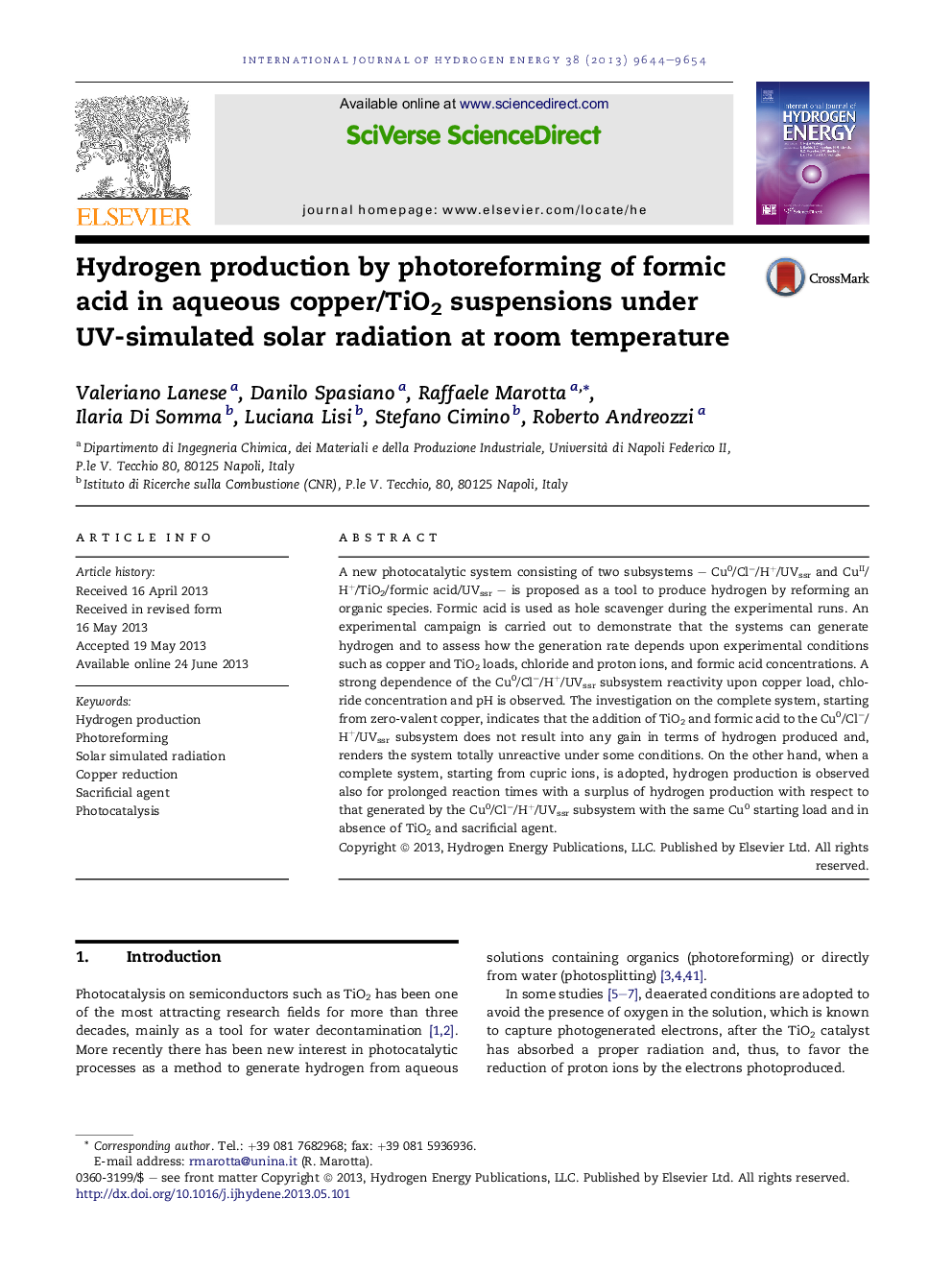| Article ID | Journal | Published Year | Pages | File Type |
|---|---|---|---|---|
| 7722206 | International Journal of Hydrogen Energy | 2013 | 11 Pages |
Abstract
A new photocatalytic system consisting of two subsystems - Cu0/Clâ/H+/UVssr and CuII/H+/TiO2/formic acid/UVssr - is proposed as a tool to produce hydrogen by reforming an organic species. Formic acid is used as hole scavenger during the experimental runs. An experimental campaign is carried out to demonstrate that the systems can generate hydrogen and to assess how the generation rate depends upon experimental conditions such as copper and TiO2 loads, chloride and proton ions, and formic acid concentrations. A strong dependence of the Cu0/Clâ/H+/UVssr subsystem reactivity upon copper load, chloride concentration and pH is observed. The investigation on the complete system, starting from zero-valent copper, indicates that the addition of TiO2 and formic acid to the Cu0/Clâ/H+/UVssr subsystem does not result into any gain in terms of hydrogen produced and, renders the system totally unreactive under some conditions. On the other hand, when a complete system, starting from cupric ions, is adopted, hydrogen production is observed also for prolonged reaction times with a surplus of hydrogen production with respect to that generated by the Cu0/Clâ/H+/UVssr subsystem with the same Cu0 starting load and in absence of TiO2 and sacrificial agent.
Keywords
Related Topics
Physical Sciences and Engineering
Chemistry
Electrochemistry
Authors
Valeriano Lanese, Danilo Spasiano, Raffaele Marotta, Ilaria Di Somma, Luciana Lisi, Stefano Cimino, Roberto Andreozzi,
